Tom's Hardware Verdict
The Elegoo Mars Pro is a well-designed UV resin 3D printer, great for both beginners and professionals looking for an affordable resin printer.
Pros
- +
Minimal setup
- +
Ease of use
- +
High-quality prints
- +
Quiet printing process
Cons
- -
Prints sticking to build plate
- -
Build plate size
Why you can trust Tom's Hardware
The second in a line of affordable UV resin 3D printers, the Elegoo Mars Pro is easy to set up and use while offering high-quality prints. Everything comes ready to go out of the box so most of your time is spent slicing files to print rather than tweaking hardware settings. This is one of the most affordable UV curing SLA printers on the market, comparable to the Anycubic Photon or Longer Orange 30. Resin printers have a much smaller build area than Fused Deposition Modeling (FDM) printers, but the quality tradeoff is worth it for many users. If you're not sure what kind of 3D printer is best for you, check out our 3D printer buying guide.
Specifications
| Dimensions | 7.8" x 7.8" x 16.14" (20cm x 20cm x 41cm) | Row 0 - Cell 2 |
| Build Volume | 4.53" x 2.56" x 5.9" (11.5cm x 6.5cm x 15cm) | Row 1 - Cell 2 |
| Resin | Photopolymer Resin | Row 2 - Cell 2 |
| UV Light | 40W | Row 3 - Cell 2 |
| Screen | 3.5" LCD Touchscreen | Row 4 - Cell 2 |
| Masking LCD Size | 2560 x 1440 | Row 5 - Cell 2 |
| XY Axis Resolution | .047mm | Row 6 - Cell 2 |
Print Quality

In general, you can expect high-quality prints from the Elegoo Mars Pro. I tested with both opaque and translucent resin and had no trouble achieving precise results.
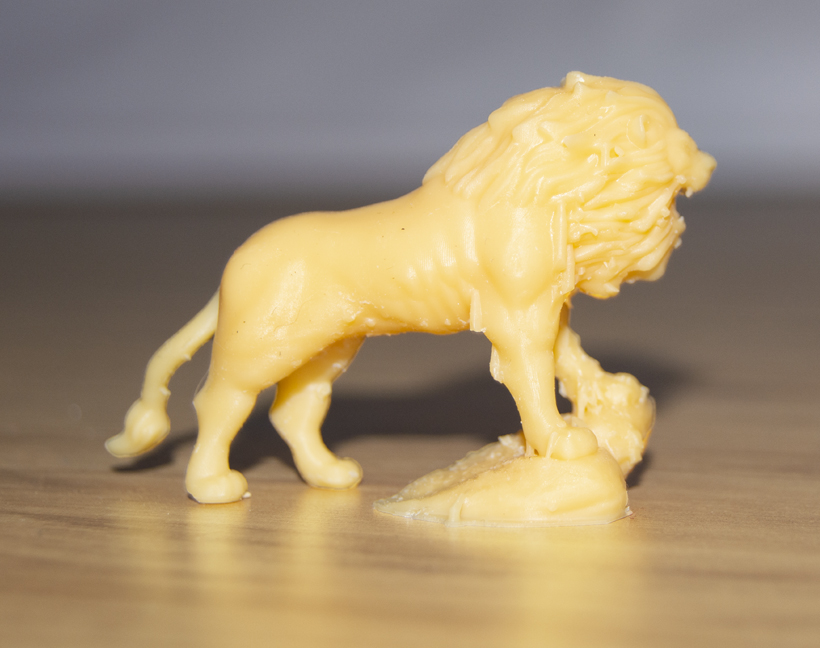
As with most 3D printers, the quality is impacted by settings in the file used to print. With the Elegoo Mars Pro, it can take some time to hone in settings that provide smooth, detailed prints. Things like resin type, exposure time, and environment can all play a hand in how your final print turns out.
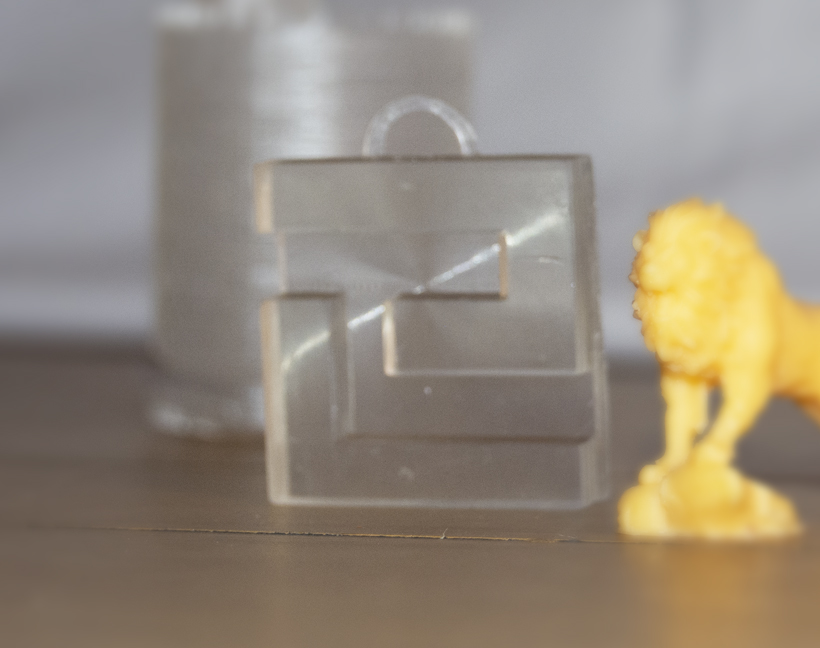
I created a keychain of the Elegoo logo to check the XY precision. It is possible to experience vertical layer shifting if the build plate is not tightly secured. Beyond that, the vertical and horizontal planes printed smoothly with no visible grooves or warping. While you might have to sand the edges of an FDM print to get a smooth finish, prints from the Elegoo Mars Pro are nearly ready as-is with very little cleanup needed.

FDM and resin printers both create objects from the bottom up, layer by layer. Printing this lion object provided an opportunity to examine the quality of a highly-detailed object and to try out printing with supports. The end result met my expectations—supports are easily applied in Chitubox and easy to remove after printing. It helps to sand the areas where supports were removed.
Elegoo Mars Pro Design

The Elegoo Mars Pro took a lot of design elements from the company's older Mars printer. Both have a small footprint and take up little space. There are a few aesthetic changes like a new color for the UV hood—which is red (instead of orange) and features a gasket to help seal fumes.

The Elegoo Mars Pro also has its share of functional design improvements over the Mars. The USB port for loading prints is on the front panel by the LCD display for easy access, instead of sitting in the back. This saved me a lot of hassle while testing.
Get Tom's Hardware's best news and in-depth reviews, straight to your inbox.
Elegoo Mars Pro: In the Box
The Mars Pro comes ready to go in the box. The team at Elegoo gives you everything you need to start printing: masks, gloves, and even filters for storing unused resin.

There's an instruction booklet with setup information and safety warnings that I definitely recommend you read through. Lastly, they provide a USB thumb drive that's pre-loaded with test prints. You can reuse it for loading your own prints.
Elegoo Mars Pro Setup
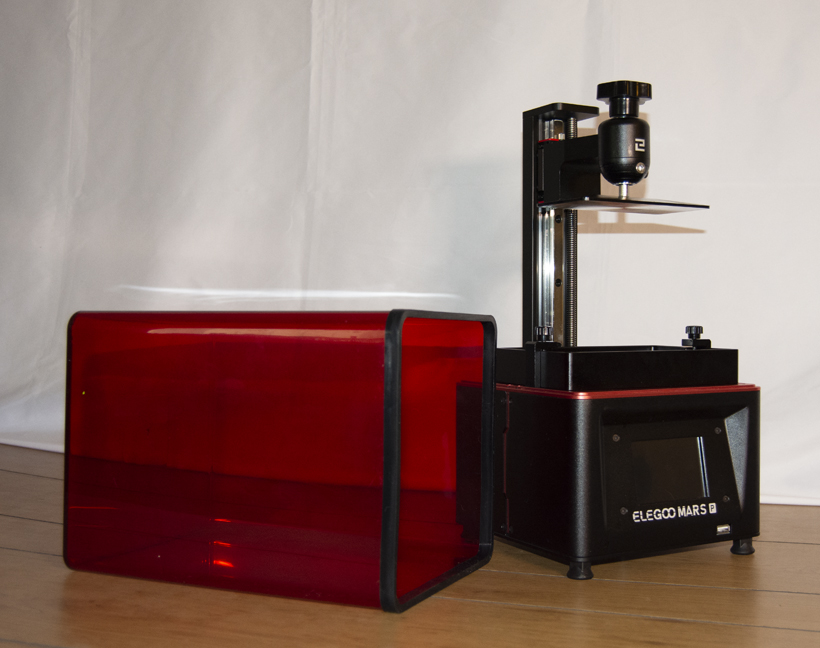
There's very little technical demand in the setup process for the Elegoo Mars Pro. Seriously, it's nearly ready to go out-of-the-box. After unpacking and unwrapping all of the components (base, hood, and build plate), connect it to power and get ready to test print.
You can load a custom print or use of the pre-loaded test files from Elegoo. As with the Mars printer, you can slice print files using the Chitubox software.
Printing Safety on Elegoo Mars Pro
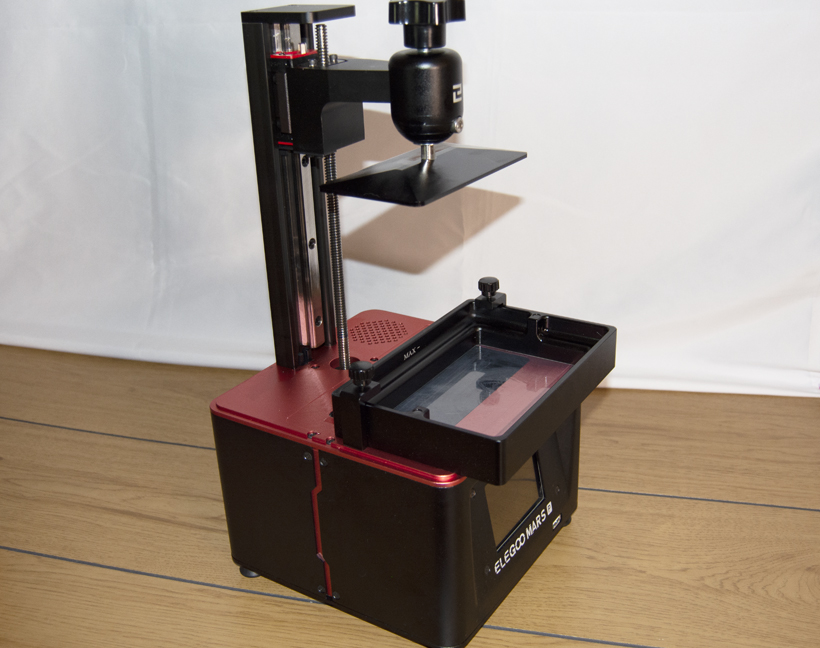
Be sure to protect yourself when using resin printers like the Elegoo Mars Pro. There's a reason the product comes with masks and gloves for 3D printing with resin. Printing resin can be harmful if inhaled or when making contact with skin. It can be even trickier to clean up when using transparent resin, so consider this a reminder to exercise caution.
The print process is similar to most UV printers. Once you're sufficiently protected, pour the resin into the resin tray. Load a 3D print onto a USB drive and select it from the LCD screen.
Resin on the Elegoo Mars Pro
The Elegoo Mars Pro supports the same photopolymer resin as the Mars. For testing, I used both transparent and opaque resins from Elegoo. I experienced delamination on the final layers before learning from Elegoo the exposure requirements vary between the colors and types of resin.
The exposure time is set within Chitubox when slicing the file for printing. Elegoo recommends increasing exposure time for the bottom layer to help with adhesion—useful if prints are falling off the build plate. The company also suggests raising the exposure time by 2 seconds if the wall thickness increases from .05 to .06.
| Elegoo Resin | Bottom Layer Height | Bottom Layer Exposure Time | Exposure Time |
|---|---|---|---|
| Maroon/Black | 5 layers | 90 seconds | 15 seconds |
| Transparent | 5 layers | 70 - 75 seconds | 12 - 15 seconds |
| All Other Colors | 5 layers | 60 - 70 seconds | 8 - 10 seconds |
Compatible Files and Software for Elegoo Mars Pro
You need .cbddlp or .ctb files to 3D print on the Elegoo Mars Pro. These can be sliced using Chitubox—a free slicing application designed just for resin printers like the Mars line from Elegoo.
Getting started is straightforward: install Chitubox on your PC, import a .stl file to print, and slice it. Drop the .cbddlp or .ctb file onto a flash drive and connect it to the Mars Pro to print.
Printing Process on Elegoo Mars Pro

The Elegoo Mars Pro has to be used in a well-ventilated area. Protect your hands with gloves and use a face mask when pouring resin. It's best to have your print loaded up on the flash drive before adjusting the resin tray.
If it's your first time printing, you will need an A1 sheet of paper to level the build plate. Re-leveling is sometimes necessary when troubleshooting print issues. Some forums suggest using a small amount of scotch tape outside of the UV plate to prevent the resin tray from forming a seal, but this isn’t officially recommended.
Once you've loaded a print, it can take a bit of time to finish. The examples I printed above took at least an hour each. The resin type and exposure time settings will be a big factor in determining how long your print will take to complete. When it's finished, you’ll need a container of 90% or higher alcohol to clean the residual resin from the final print.
Versus the Elegoo Mars
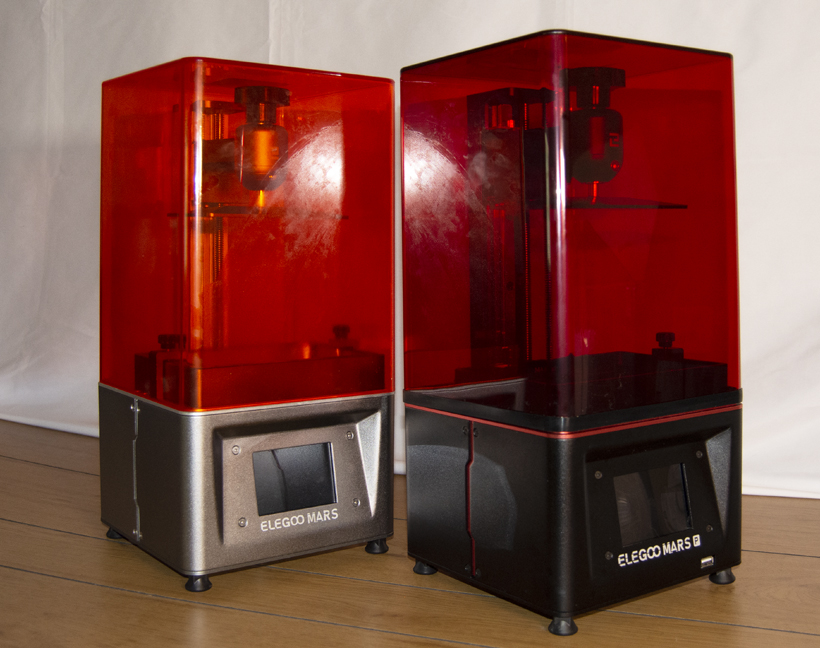
It's hard not to compare the Mars Pro to its predecessor, the Mars. Improvements are definitely noticeable—long gone is the startlingly loud series of beeps that occur when printing the initial layers. The case design is very similar to the Mars, but it's little things like a USB port on the front instead of the back and a larger resin tank that make a huge difference.
The z-axis has been improved as well as the UV LED which now uses a 50-watt source instead of 40W. The Mars Pro also features a built-in air filtration system which works great with the included hood gasket. If you'd like a comparison, check out our review of the Elegoo Mars here.
Bottom Line
The Mars Pro is an impressive resin printer with an expected price of $369. This is a $100 increase on the Mars, but the upgraded tank, UV light and Z-axis mechanism prove to be substantial upgrades. The unit can print for much longer without a refill and cure much faster with the 50W UV light. For a 3D printer in this price range, the prints are notably high-quality and the performance is reliable. It's easy to use and requires little maintenance in the long run. If you want an affordable printer with professional results, Mars Pro is definitely a strong contender.
As of right now, the Elegoo Mars Pro printer is listed on the Elegoo website, but is not yet available for sale. There may be a few delays in delivery due to supply chain disruptions. According to Elegoo, the team expects units available on Amazon to order by the end of May.

Ash Hill is a contributing writer for Tom's Hardware with a wealth of experience in the hobby electronics, 3D printing and PCs. She manages the Pi projects of the month and much of our daily Raspberry Pi reporting while also finding the best coupons and deals on all tech.
-
nibb0r 4.5 stars > 4.5 starsReply
I'm talking about the Mars Pro vs Mars here and the stars you gave for each compared to how much better you said the Pro is. -
cryoburner Reply
The impression I got from the review is that the improvements are nice, but not exactly a massive improvement to the overall useability of the product, and nothing that significantly affects the quality of the resulting output. And ultimately, you're paying at least $100 extra for them, which amounts to about a 40% higher price compared to the original Elegoo Mars.nibb0r said:4.5 stars > 4.5 stars
I'm talking about the Mars Pro vs Mars here and the stars you gave for each compared to how much better you said the Pro is.
And of course, I don't think they go into fractions of a score beyond half-stars here, so there will naturally be some rounding involved.